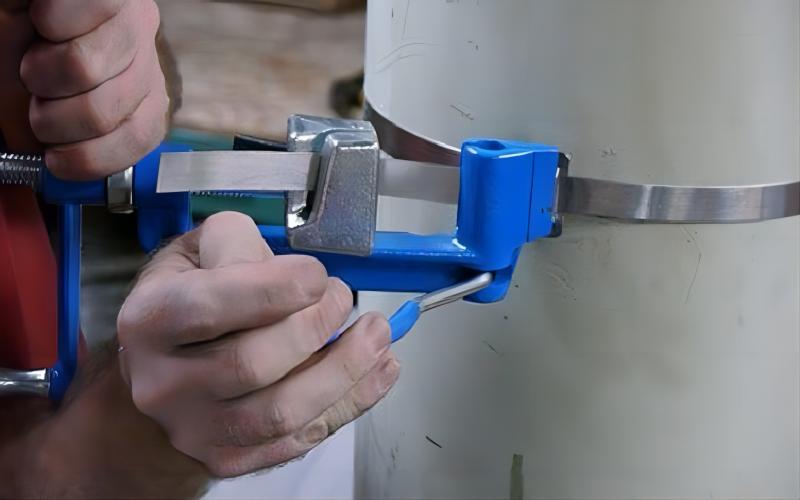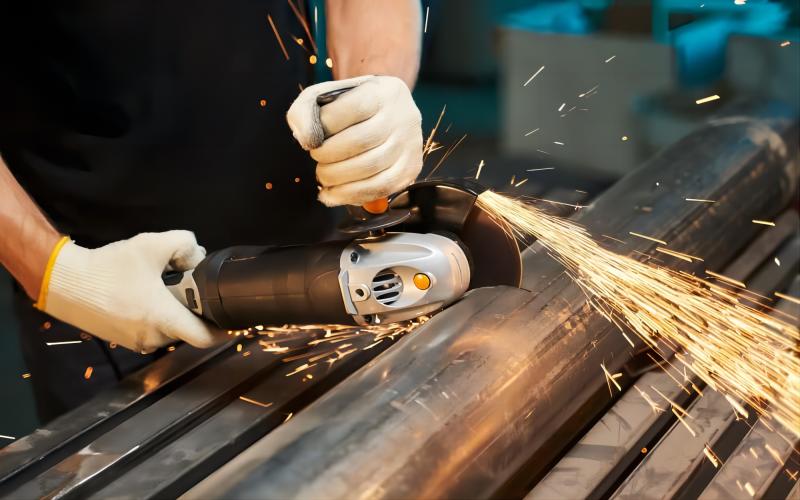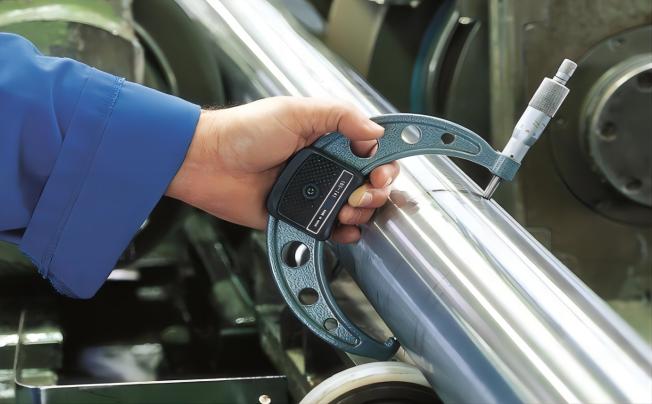Procedures for Cutting Stainless Steel Pipe
Step 1: Measure The Pipe
The pipe must first be measured. To cut the pipe to the right size, you’ll need to know how long it is.
Make a pencil or marker mark on the pipe after you have the measurements. Make sure the markers are clear and legible so you can easily determine where the cut needs to be made.

Step 2: Pick Your Favorite Tool
After marking the pipe, it’s time to select the appropriate tool. Cutting a stainless steel pipe can be done with a variety of tools. Each of them has advantages and disadvantages, but they can all be utilized to complete the task: Angle Grinding Machine, Pipe Cutter, Chop Saw, Circular Saw, Saw Belt, Jigsaw, Plasma Cutting Machine, and Hacksaw.
Step 3: Don the Protective Gear
It’s crucial to put on the appropriate safety equipment before you begin cutting the pipe. This includes earplugs, gloves, and eye and eye protection. You don’t want any flying sparks or debris, regardless of the cutting instrument you choose, to get into your eyes.
Wearing the proper ear protection is essential because some instruments also emit loud noise that might damage your ears.
Step 4: Cut The Pipe
It’s time to cut the pipe after selecting the appropriate instrument for the task.
Step 5: Deburr The Pipe
After cutting the pipe, you must take care to round off any jagged edges. Deburring is the term for this. There are numerous approaches, but the two most popular ones include a belt grinder or a file.
The quickest and simplest method for deburring a pipe is with a belt grinder. They might, nonetheless, be pricey. Simply turn it on and run the cut end of the pipe along the running belt to remove the burr if you already have one and want to utilize it for deburring.
Files are a less expensive option, but they take more time. It is simple to use; simply begin filing the burrs away until you are satisfied with the outcome.
Step 6: Scrub the Workspace and Pipes
It’s time to clean the workplace and the pipe that has been cut and deburred. First, clear the workplace of all the trash and metal shavings. Although a hoover is recommended, a broom can also be used. After that, wipe down the pipe with a clean towel to get rid of any leftovers.
More Comprehensive Tips for Cutting Stainless Steel Pipe
1. There are many different lengths and widths of stainless steel pipe. These specifications vary depending on the application, and different pipe sizes require different cutting equipment. An orbital pipe saw is necessary to cut large stainless steel pipes that are more than a few inches in diameter. While a powered saw cuts around the pipe’s exterior, these pipe saws firmly hold the pipe in place. Larger pipes can be cut using this machine’s power and steadiness, but smaller pipe sizes can be incorrectly cut if not even damaged. Large stainless steel pipes must be cut while wearing protective glasses and thick gloves.
Smaller stainless steel pipes or tubes can be cut with less force than bigger pieces while maintaining the same strength and durability. For smaller sizes of stainless steel pipe, often less than a few inches in diameter, you can use a handheld stainless steel tubing cutter. This mechanism secures the pipe in position while a hand-driven blade trims the pipe’s edge. This sort of cutter can handle smaller pipe diameters, but it cannot handle bigger industrial pipe sizes. When using a handheld stainless steel pipe cutter, thick gloves are required. Use a cutting wheel and right-angle cutting guide on a multifunctional rotary tool to cut through stainless steel pipe as an alternative to a tubing cutter. This kind of instrument is very helpful in confined spaces where it becomes challenging to hold and rotate a normal tube cutter by hand.
2. Grinding
Cutting stainless steel tubing does not always result in perfectly straight, equal edges. Once the initial cut is complete, you must use a grinder to smooth off the edges. A stone wheel can be used to smooth off the burrs left over from cutting and produce a final edge for pipe fitting. The cut end of the pipe is ground against the stone surface to remove major flaws and get it ready for finer finishing. Any particles left over from the grinding process can be quickly cleaned up with a wire wheel after the grinding phase is complete.

3. Sanding
Another layer of finishing is necessary once the pipe’s rough edges have been smoothed with a stone wheel. Smaller flaws are eliminated using a sander using heavy-duty sandpaper, which is missed by the coarse grain of the stone wheel. The smoother, straighter edge produced by the sanding process facilitates fitting. A rotary tool with sanding accessory points can also be used. However, leaving debris behind after grinding and sanding the edge is possible. Any sanding-related material is cleaned away with a wire wheel, leaving behind a straight, clean pipe edge that is ready for fitting.
In addition, here are some more tips to help you successfully cut stainless steel tubing:
If you won’t be utilizing the pipe right away, keep it in a safe, dry place. It is important to regularly inspect the installed pipe for signs of damage. If cutting the pipe proves challenging, try heating it with a torch. This will make cutting the metal easier.
No matter which cutting tool you decide to use for the job, make sure you’re utilizing the right blades that are rated for cutting stainless steel.


